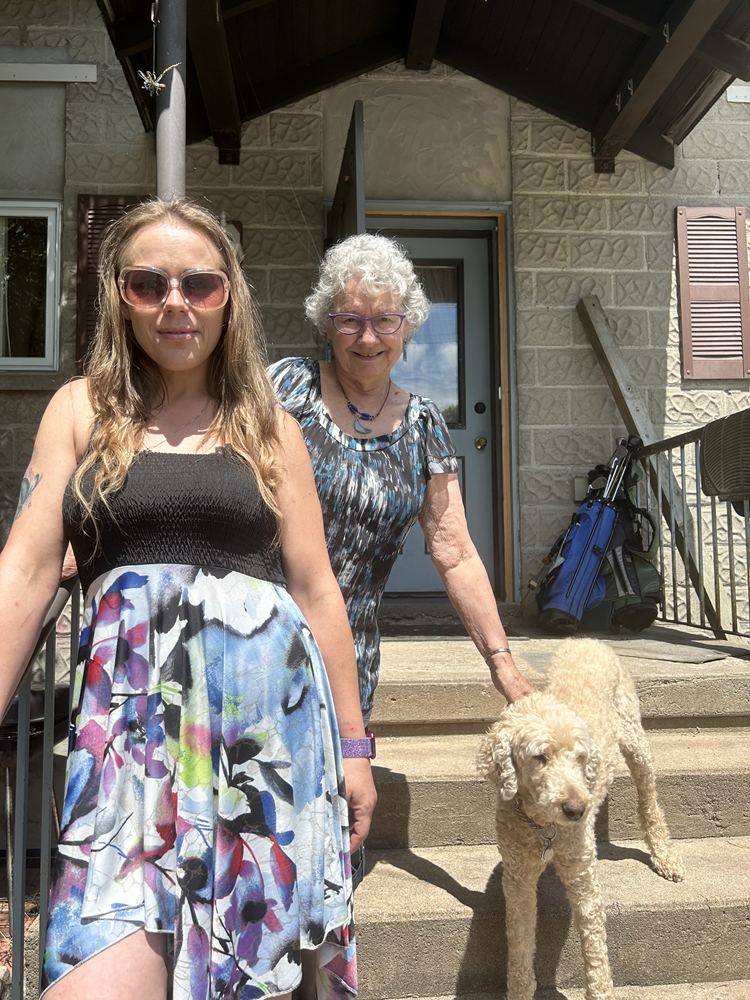HIGHLANDER INVESTIGATES
The Haliburton, Kawartha, Pine Ridge district health unit (HKPR) has pegged the living wage for the region at $20.60 per hour in a recent report addressing local food insecurity and poverty – though Joli Scheidler-Benns of the City of Kawartha Lakes Haliburton Poverty Reduction Roundtable believes that number is “way, way off.”
Each year, the health unit updates its statistics on incomes and the cost of food and rent in Kawartha Lakes, Haliburton County, and Northumberland County – providing a snapshot of how, and where, people are struggling.
A key component of the study is monitoring food affordability and accessibility using the provincial nutritious food basket (NFB) tool. The health unit says the cost of the NFB across HKPR helps show the link between healthy eating and family income in the area.
It also looks at average monthly rents using rental listings from online marketplaces and newspapers. In its report, HKPR says anyone spending more than 30 per cent of their income on accommodation is likely living in poverty.
Government, community leaders must do more
It considered various scenarios – at the top end, a family of four with a median monthly income of $9,290 were found to spend 26 per cent of their income on rent ($2,391 for a three-bedroom) and 13 per cent on NFB foods ($1,184), leaving $5,715 for other basic needs. This demographic was the only one in the report to be above the poverty line.
A family of four with minimum wage earners brings in $4,166 monthly – spending 57 per cent on rent and 28 per cent on NFB, leaving $591. A senior living on old age security rakes in $1,996 monthly and spends 73 per cent on rent ($1,451 for a one-bedroom) and 15 per cent on NFB ($307 for a single person), giving them $238 for other essentials.
At the lowest end of the scale, a single person living on Ontario Works receives a maximum monthly income of $868. With average one-bedroom rentals at $1,451, or 167 per cent of an OW recipient’s income, and NFB costs taking another 49 per cent, they’re already $1,008 in the hole before accounting for any other cost.
“People are really struggling,” ScheidlerBenns said. “When you factor in the cost of rentals alone, if you can even find one, our lowest earners and people enrolled in programs like OW and ODSP just don’t have a chance.”
In its report, the health unit stated 12.9 per cent of County households are considered low-income. The poverty roundtable, in a 2021 release, estimated that number at closer to 17.9 per cent.
Scheidler-Benns believes the situation today is even more challenging.
“My guess is the numbers have increased. Part of the challenge with statistics is the numbers are usually around 15 months out of date by the time they’re released. Prices have gone up drastically since then, for pretty much everything – food, housing, fuel, heating… those on fixed incomes are trapped.”
There hasn’t been an increase to OW rates since 2018. Those on ODSP saw marginal increases – five per cent in September 2022 and 6.5 per cent in July 2023, but the maximum people receive through that program is $1,308 per month – which doesn’t even cover the cost of a rental today.
Lived experience
Forty-year-old Haliburton resident Angie Wilson has been living on ODSP for much of her adult life. Born in British Columbia, but raised in the Highlands, Wilson moved back to the County in 2013, after a few years in Barrie. She needed somewhere more affordable to raise her three children.
She was comfortable for a few years, but around 2017 – when cost of living started to increase – the struggle set in. With the walls closing in, Wilson found salvation through Places for People – a County-based nonprofit committed to providing affordable housing to those in need.
Wilson was given a three-bedroom apartment in Haliburton village at a reduced rate of $906 per month.
“I would have been screwed without Places for People. They have saved my life more than once. I would have lost my kids multiple times over if they didn’t step in when they did,” Wilson said.
Two of her children have since come of age and moved out – drastically changing Wilson’s income. She receives money from ODSP and child support for her 15-year-old daughter, but with costs rapidly rising over the past 18 months, and Wilson’s monthly intake dropping by around $1,000, she said she’s struggling to keep her, and her daughter’s head above water.
She recently took a roommate, her uncle, and while that’s provided some respite – helping to cover the cost of basic necessities – Wilson said she feels trapped. “The depressing, hopeless thing for me is I know there’s no future. I don’t have anything to look forward to. Once my youngest daughter gets older I don’t know what I’m going to do,” Wilson said – noting her only income will be her monthly ODSP cheque.
“I still have those costs, because you’re always going to help your kids as much as you can. But I’ll be spending more than half my income on rent. And I’m one of the lucky ones, already living in subsidized housing.”
Services stretched
Janine Mitchell, manager, human services with the City of Kawartha Lakes – which delivers social services to County residents – said, as of Sept. 2023, her department is assisting 255 people from the County on OW.
They also support low-income working households. The minimum wage in Ontario is currently $16.55 per hour. In a recent report to CKL council, Mitchell said single workers, or single worker families, working full-time on minimum wage bring in $30,121 annually. Using the health unit’s $20.60 living wage, full-time workers would bring in $37,492.
“The idea when minimum wage was first introduced was that one parent heading off to work could comfortably cover a household’s costs – that’s just not possible anymore,” Mitchell said.
The demand for social housing is greater than it’s ever been. The Kawartha Lakes Haliburton Housing Corporation is responsible for managing the local program. Aaron Mulcaster, program supervisor, said there are 429 households on the waitlist for community housing in the County.
He said 101 households have been on the waitlist less than a year. “A few” have been waiting 10 years or more.
Mulcaster said KLH has found housing for 27 County families since Jan. 1, 2023.
With costs rising across the board, more people than ever before are turning to food banks for support. Jean Munroe, executive director of the Minden Community Food Centre, said demand for service increased 27 per cent in 2022 and 35 per cent in 2023. It’s been a similar story through the first half of 2024, she said.
Barbara, who asked that her last name not be published, said she’s been relying on the Minden food bank for years. Also living on ODSP, Barbara said around half of her monthly income goes towards rent. After heat, hydro and other necessities she said that leaves her with next to nothing for groceries.
“Nobody wants to go to the food bank, we go there because we have to. I’d starve if it wasn’t for them,” Barbara said. “It’s not a nice way to live – I don’t have much, don’t get to do much. It’s just survival at this point.”
The Central Food Network, which operates food banks in Cardiff and Wilberforce, reported a 37 per cent increase in demand across the two sites in 2023. Tina Jackson, CFN executive director, fears people are struggling more than ever before – estimating a similar, if not greater, demand through the first half of 2024.
Judy MacDuff, manager of the 4Cs food bank in Haliburton, said demand increased about 28 per cent in 2022 and 31 per cent in 2023. With a similar increase likely for 2024, the Haliburton facility will be serving double the number of clients it did in 2021.
The children
The health unit estimates 25 per cent of children in the Highlands are living in poverty. Marg Cox, executive director of Point in Time, said that number is shocking but not surprising.
“I would say we deal with it every day – whether it’s a young child, youth, or older teenager. We’re trying to help them as much as we can,” Cox said.
Point in Time has partnered with Haliburton Foodland to collect food donations it can pass on to families in need. It also receives frozen meals from SIRCH Community Services. Occasionally, Cox said they’ll use cash or gift cards to buy food for people in a real crunch.
She estimates they’re assisting between 150 and 200 people per month.
Cox believes most service providers are already doing everything they can to help people. Real change, she says, needs to come from the different levels of government.
“The gap between the haves and have nots continues to widen… this is Canada we’re living in. It’s not supposed to be a place where people go hungry. And we know that people are,” Cox said. “I remember there being a campaign years ago, groups talking about ending poverty by the year 2000. I think we’re further away from that than ever before.
“It takes governments and community leaders making it a priority to come together and really figure out, together, how to deal with this issue. That hasn’t really happened yet,” Cox added.





